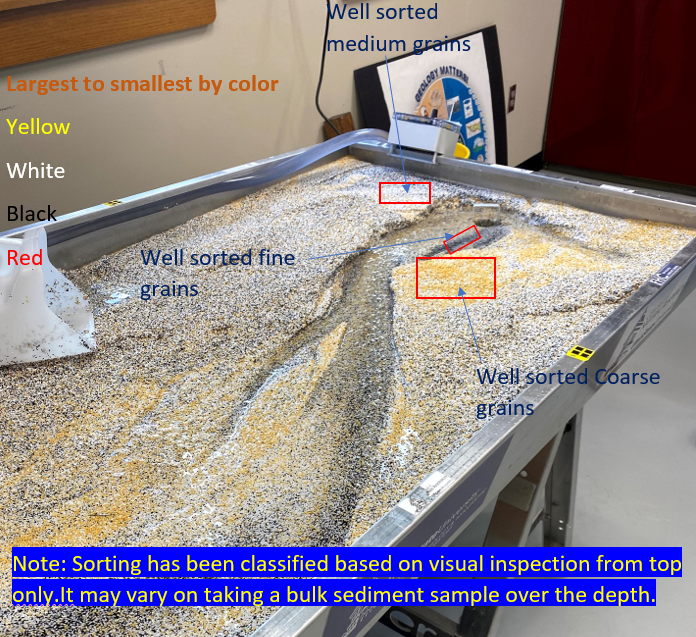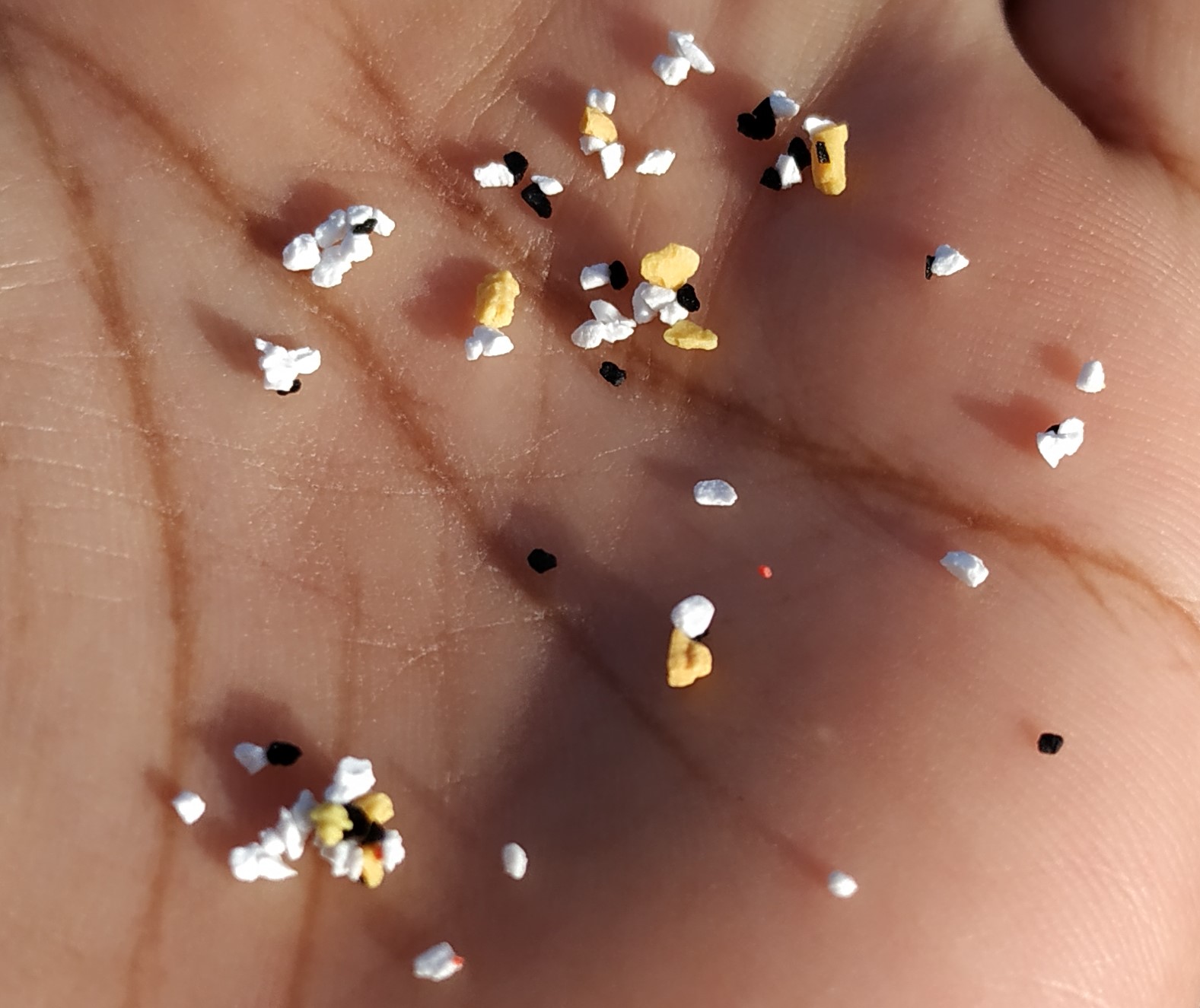Module 6 Flume Observations: Fluvial Geomorphic Processes
The Set-Up
We went and played with my lab’s demonstration flume. It is an EM-River EM2 Stream Table, which is a 1.9 m x 0.8 m flume that can recirculate about 100 L of water. Geology has been kind enough to let us leave this set up in their Geology 101 Lab, where most of you got to cycle through and play with the experiment.
Purpose
The purpose of the experiment was to give you first hand, observational experience of fluvial geomorphic processes. While the process of storage (of sediment) is quite easy to observe in the field, being able to observe erosion, deposition and sediment transport in real-time, as well as watch the resulting geomorphic (topographic) changes is difficult. The flume speeds up time and scales down space in a way that makes it easy to observe these processes first hand. This also will help you in reading Chapter 6 on “Sediment movement and deposition in river systems”.
The Assignment
Please create a web page on your web site (submit URL to that page). On that page, you will define and/or explain each of the concepts below with text (1-3 sentences) and illustrate your observation of them. Your ‘illustration” can use video(s) with narration and or labels, and/or photos with annotations. If helpful, feel free to hyperlink to other resources.
I would suggest using the numbers below to organize your page into headings and sub-headings, and make sure you h
Concepts to Illustrate & Explain
1. Flume Controls
How do you control the following with the flume:
- 1.1 Q (Water Discharge)
- 1.2 S (Slope)
- 1.3 Qs (Sediment Discharge)
- 1.4 Profile
- 1.5 Base Level
2. Fluvial Geomorphic Processes
Simulate and record your observations of:
- 2.1 Bed Erosion
- 2.2 Bank Erosion
- 2.3 Deposition
- 2.4 Sediment Transport
3. Fluvial Geomorphic Mechanisms
Simulate and record your observations of the specific manifestation of fluvial geomorphic processes as these mechanisms of adjustment:
- 3.1 Grain Size Sorting
- 3.2 Meandering
- 3.3 Braiding
- 3.4 Avulsion
- 3.5 Chute Dissection
- 3.6 Structural Forcing
Answer (in up to a paragraph or so and with illustrations if helpful):
- 3.7 While meandering can be observed, were you able to produce a classic single-thread, meandering channel in any of your experiments? If so, explain how it occurred, if not, do you think it is possible with the controls you had at your disposal in this flume?
4. Events
Simulate and record your observations of three specific events::
- 4.1 Small Flood
- 4.2 Big Flood
- 4.3 Channel Realignment (Grading)
Answer (in up to a paragraph or so and with illustrations if helpful):
- 4.4 From what you did, what seems to be the roll/impact of small flood vs. big flood?
- 4.5 In your experimentation, did you observe overbank flows, bankfull flows and/or baseflow flows?
- 4.6 What role did hyporehic flow play in what you observed?
- 4.7 What roll did recession limb flows seem to play in what you observed?
Resources
Album
Here is a shared Google Album. If any of your pictures or videos didn’t capture everything you need above, you can borrow from here. Please feel free to contribute and share your own. Others may see different things in the same videos!
Videos
Some videos Joe took:
Some Student Contriubtions:
You have to figure out how to document the processes and answer the questions on your own but a little inspiration to borrow from never hurts…
2021
In our 2021 class some of the students really went above and beyond. Some of the most effective examples are shown below:
Manisha's Video Annotation of Processes
Manisha did a great job of using text editing in her video to highlight how the flume works and specific processes..Lauren's Video Annotation of Processes
Lauren did one of the most impressive jobs of taking one of the videos and annotating what's going on throughout.Lauren's Video Annotation of Structural Forcing
Lauren again highlights exactly where structural forcing is taking place:Daniel's Narration of Structural Forcing
Daniel did a great job of explaining individual mechanisms and narrating what was going on.Here Lauren and Gabe explain sorting:
Jens and Megh did a nice job of using really helpful annotations to illustrate different concepts:
Discharge and Slope Controls with Flume
From Jens.Recipe for a Meandering River
We mentioned the following in discussion:
This was experimental work Christian Braudrick did and his featured in this article:
- Braudrick CA, Dietrich WE, Leverich GT, Sklar LS. 2009. Experimental evidence for the conditions necessary to sustain meandering in coarse-bedded rivers. Proceedings of the National Academy of Sciences of the United States of America 106 : 16936–16941. DOI: 10.1073/pnas.0909417106
See this Physics.org article for a video. I could not find the NPR version of the video.
The work in the NPR article of Christian was based off of earlier work by Michal Tal (Tal and Paoloa, 2007). Here’s one of her experiments:



